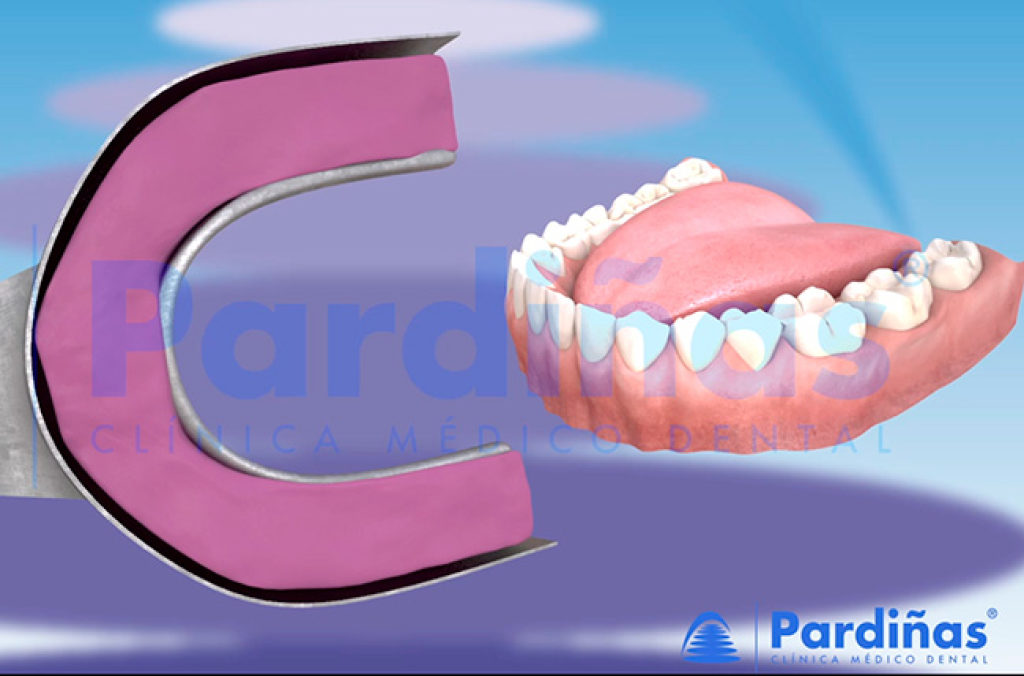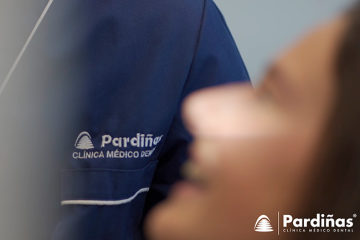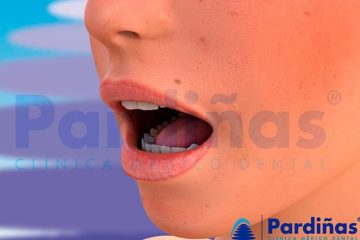Dental inlaying is a procedure to restore a very damaged tooth. We answer some frequently asked questions about dental inlays here.
1) What is a dental inlay?
Dental inlay is a therapeutic alternative performed to restore a very damaged tooth in order to preserve the area that is still healthy without using a full coverage crown. More specifically, it is a block restoration, which is made to measure for the tooth on which it is going to be cemented, replacing the structure that may have been lost and thus restoring its anatomy, function and aesthetics, as if it were a puzzle piece.
1a) When is inlay recommended?
Dental inlay is recommended for any damaged piece that does not require a crown. This tooth deterioration usually occurs due to cavities, wear, incorrect bite or a tooth fracture. The most common thing is that inlays are placed on the back teeth or molars, the pieces that suffer the most from this type of problems.

1aa) Is a dental crown or an inlay better?
It depends on the clinical case of each patient. A dental crown also restores the aesthetics and functionality of a tooth, but it is usually placed on more damaged teeth, since it is a cover that imitates the anatomy of the tooth and completely covers it.

1b) The step by step of inlays - How are they placed?
This is the process to follow to place a dental placement.
- 1) First of all, the affected part of the tooth is removed, which creates a space in which the inlay will adhere, in addition to eliminating the possible cavities that caused it.
- 2) In parallel, a mold of the mouth is made, on which the dental inlay of the appropriate shape and size is manufactured. This process can be done by computer and printed directly.
- 3) While this process is taking place, the cavity is sealed of the tooth surface temporarily.
- 4) Once the inlay is manufactured, the provisional is withdrawn and the final fit is checked, polishing and eliminating inappropriate contacts until it fits perfectly.
- 5) Subsequently, the area is prepared, the inlay is cemented to the tooth and the surface is polished to adjust the occlusion.

1c) Preoperative and postoperative dental inlay
It is recommended to follow some guidelines before and after carrying out of an inlay to ensure its success although it is a simple treatment. It is advisable to eat a few hours before the treatment to avoid low blood sugar or other decompensations due to anesthesia and, of course, brush your teeth properly. After the procedure, it is advisable to avoid very hard foods that could damage them, as well as using a relief splint to sleep in case of patients with bruxism. Of course, maintaining good dental hygiene will lengthen the life of the inlay and, in general, your oral well-being.
2) What types of inlays exist?
We can talk about two categories of inlays depending on the size and on the material used for its realization.
2a) Depending on the size of the inlay
We take into account whether the dental inlay will cover much or little part of the tooth structure to be restored.
2aa) Dental inlay
The inlay is what covers the occlusal surface of the tooth, but does not cover any complete dental cusp.
2ab) Dental onlay
The onlay covers the occlusal surface of the tooth and part of the cusps of the tooth.
2ac) Dental overlay
The overlay covers the entire part occlusal of the part to be repaired.

2b) Depending on the materials used
We can also distinguish different types of inlays depending on the materials used for their production. Whichever option is chosen, the material must be biocompatible, durable over time, allow conservative carving and ensure the maximum possible sealing of the restored tooth.
2ba) Porcelain inlays
Porcelain inlays are the most used since they return the tooth to its natural appearance and has great hardness and durability.
2bb) Composite inlays
Composite inlays are made with resin (microparticle, hybrid, microhybrid or combinations) and polymerized with LED light. Although they give the shade of the color of the tooth on which they are cemented, they are made of a material that can be accompanied by increased wear over time.

2c) How long do dental inlays last?
It is difficult to give a precise answer to this, since it will depend on each person and the care they have. In general terms, those of porcelain usually last a few 15-20 years, in front of the 10-15 years on average offered by resin.

3) Advantages and disadvantages of inlays
Finally, we wanted to highlight some advantages and disadvantages of this treatment compared to other similar alternatives. Between the advantages, they allow the natural structure and anatomy of the tooth to be preserved, they are more resistant than a filling, they do not weaken as much as the covers and strengthen the pieces that have beenendodontics. Between the disadvantages, we could highlight that the carving and cementing process is more complex and, therefore, they involve a greater financial outlay because they require more work and manufacturing time in the laboratory and at the dentist.


